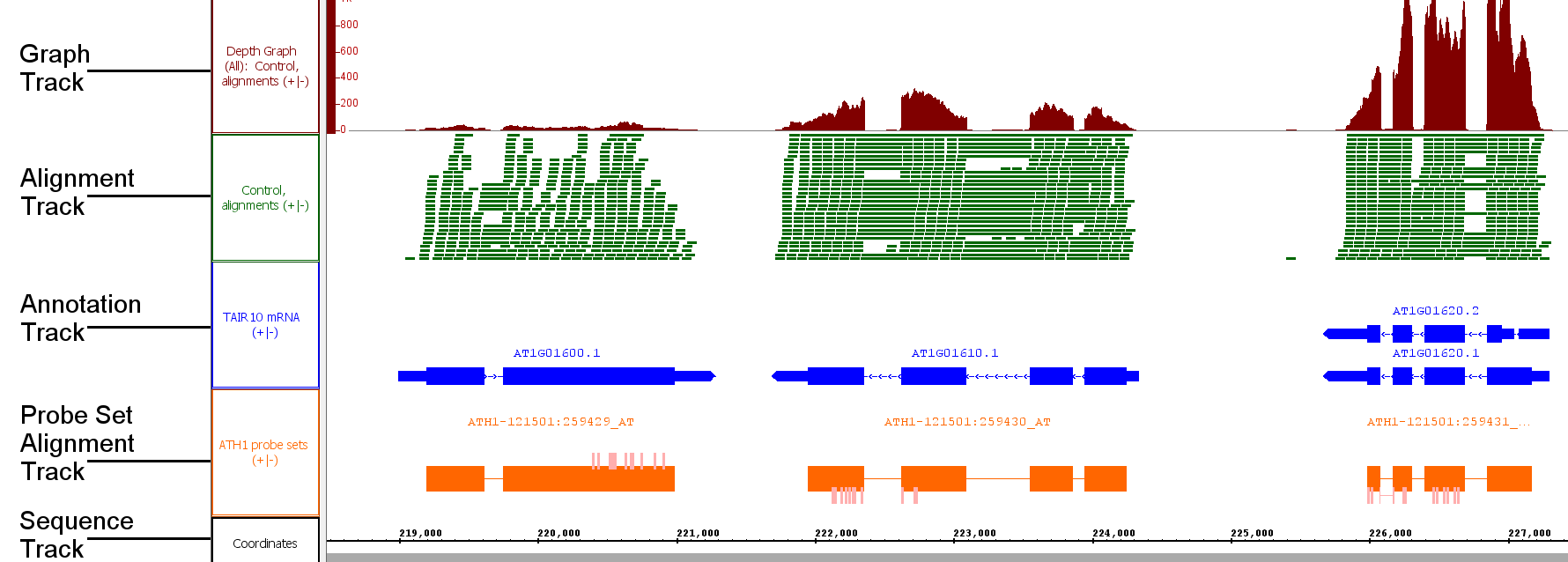| Table of Contents |
|---|
...
Genomes and chromosomes
ChromosomeChromosomes, also called contig contigs or reference sequencesequences, refers refer to one or more annotated sequences that form a genome assembly. For completed genome projects, these often correspond to the sequence of a physical chromosome. AlternativelyFor less complete genomes, they may represent assembled contigs corresponding that correspond to parts of a physical chromosome.
...
Tracks
Tracks are rows of data that appear in the IGB interfaceread from the same file or data set. When you open a file, the data within the file will appear in one or more tracks. Older versions of IGB refered referred to tracks as "tiers" and so you may see this term used elsewhere in the User's guide. There are three main types of tracks: Graph tracks, Annotation tracks, and Reference Sequence tracks. Alignment tracks and Probe Set tracks are types of Annotation Track.
...
Annotation tracks
Annotations indicate the known or suspected locations of genomic features such as genes, exons, promoter regions, pseudogenes, and so forth. Annotations may consist of a single coordinate, a single span with a start and end positions, or a collection of spans. Most annotations reside on either the plus or minus strand of a chromosome, but some do not.
...
- single-coordinate feature: splice sitessite
- single-span feature, with strand: an exon
- single-span feature, no strand: sequence recognized by a restriction siteenzyme
- multi-span feature, with strand: a gene model
...
Alignments represent how sequences obtained from an experiment (such as sequence reads from an RNA-Seq experiment) align onto a reference sequence. At low zoom they look like annotations, with marks representing mismatches, insertions, or deletions. At higher zoom, the aligned sequence bases become visible.
...
Probe set alignments consist of Affymetrix probe set target sequences aligned onto the reference with probe locations indicated as annotations on the target sequence alignments. The probes are kind of annotation on an annotation.
...
